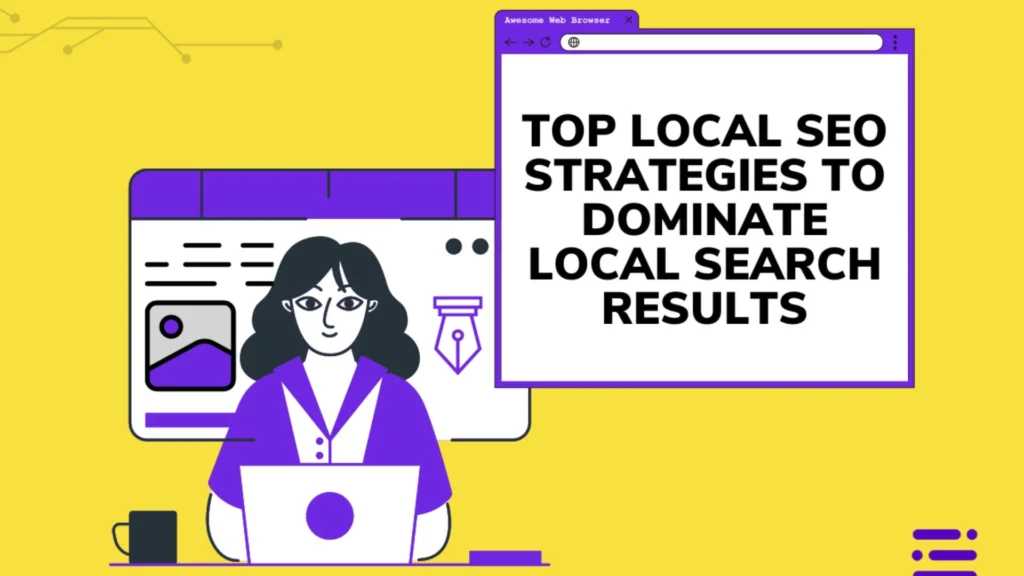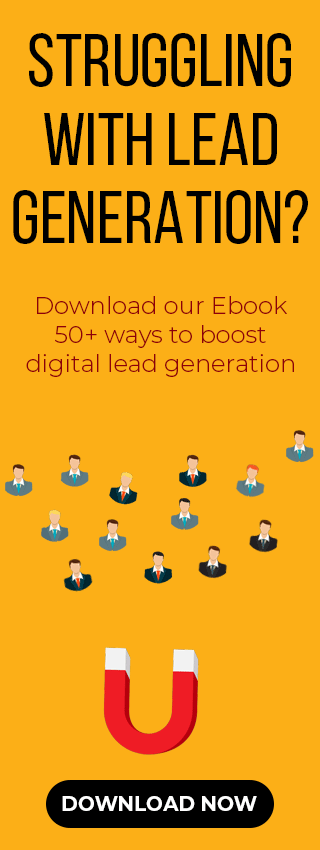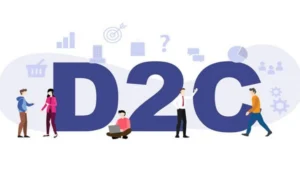If you work in real estate — agent, broker, developer, or marketer — local search is where almost every high-value lead begins. Buyers and renters search for “houses near me,” “2-bedroom apartment [city],” or “best realtor in [neighborhood]” when they’re ready to act. That means dominating local SEO is not a nice-to-have: it’s the channel that brings motivated, high-intent users to your doorstep.
Before tactics: the numbers you should care about. Industry tracking shows organic search still drives the lion’s share of real-estate site traffic — industry summaries estimate roughly half of real-estate website visits come from organic search — and around half of all Google searches have local intent. Those two facts alone explain why local SEO must be a priority.
Below I’ll walk through the practical strategies that map directly to user intent (buyers, sellers, renters, investors, browsers) and explain how to prepare for near-future shifts like voice & AI search, immersive virtual tours, and more.
Best Strategies for Real Estate to Dominate Local Searches
1) Map content to real user intent (buy, rent, learn, compare)
Too many real-estate sites bury people under pages that don’t match intent. Organize content by what users want at each stage:
- Transactional intent (high): “homes for sale in [neighborhood]”, “buy house [city]” — pages: MLS listings, buy pages, financing/offer help.
- Commercial/consideration intent (mid): “best realtors [city]”, “top neighborhoods for families near [city]” — pages: agent profiles, neighborhood guides, comparison pages.
- Informational intent (low): “how to get a mortgage”, “closing costs in [state]” — blog posts, calculators, FAQs.
Create templates for each intent type: listing pages with clear calls to action, neighborhood pages with amenities & commute info, and deep FAQs that target long-tail questions — these are the queries voice assistants and AI will pull answers from. Structure content with clear H1/H2s, schema (see below), and CTAs (schedule tour, call, save listing).
2) Own Google Business Profile — and optimize it continuously
Google Business Profile (GBP) is no longer optional. For many local searches, the map pack appears above organic results — and users click phone/call or directions directly from GBP.
Best practices:
- Claim and verify every office/branch/agent location.
- Keep NAP consistent (Name, Address, Phone).
- Use categories wisely (e.g., “Real estate agency”, “Real estate agent”).
- Post regularly (open houses, new listings, market updates).
- Add high-quality photos and virtual tour links.
- Use messaging and the “Book” or “Call” CTA if available.
Why it matters: GBP drives discovery and calls — neglect it and you lose high-intent queries. For context, multiple local SEO trackers show that a substantial portion of local buyer activity starts with maps and GBP.
3) Build high-quality, hyperlocal neighborhood pages
If you want to rank for “homes in [neighborhood]” you need pages that truly serve that searcher:
- Page elements: average home prices, recent sales data, commute times, top schools, parks, transit stops, best coffee shops, photo gallery, and a local market snapshot.
- Use local signals: embed a Google Map, mention nearby landmarks, and add schema for LocalBusiness and Place where appropriate.
- Internal linking: link neighborhood pages from main city pages and agents who work that area.
- Evergreen + fresh: update prices and available listings monthly to keep content fresh.
Neighborhood pages convert well because they match search intent precisely; plus they’re perfect for local keyword clusters and “near me” queries.
4) Optimize listings with structured data (schema & rich snippets)
Structured data (schema.org) is a must for property listings. Use JSON-LD to mark up:
- Property type, price, address, availability, number of bedrooms/bathrooms.
- Aggregate rating and review snippets (for agents).
- Business info for offices and open house events.
Schema increases the chance of enhanced search results (rich snippets) and helps AI systems and voice assistants surface your content accurately. For property feeds (IDX/MLS), feed structured data cleanly and avoid duplicate content issues — canonicalize listing pages where necessary.
5) Mobile speed & Core Web Vitals: don’t lose leads to slow pages
Real-estate searches are mobile-first: many users search listings on phones while out and about. Google’s Core Web Vitals still matter for ranking and, more importantly, for conversion. Focus on:
- Fast server response and efficient image delivery (use WebP/AVIF).
- Prioritize above-the-fold content (lazy load below).
- Keep interactive elements responsive (avoid huge scripts).
- Use a CDN and optimize CSS/JS.
Page speed improvements directly reduce bounce and increase form fills, tour bookings, and calls.
6) Optimize for voice & conversational search
Voice search and live AI-assisted search are shifting query syntax toward natural, conversational phrases. Optimize for that:
- Add FAQ and Q&A blocks that mirror spoken questions: “Who are the best agents in [neighborhood]?” “How much deposit for a condo in [city]?”
- Use long-tail conversational keywords and include short, direct answers near the top of pages (good for featured snippets and voice responses).
- Make sure your GBP phone number is click-to-call and local-format to capture voice-driven calls.
Voice adoption is growing — studies estimate ~20%+ of users engage voice search regularly — so conversational content will matter more.
7) Reviews & reputation: social proof for local rankings
Reviews are both a ranking and a conversion factor. Encourage satisfied clients to leave reviews on GBP, Zillow, Realtor.com, Facebook, and niche local sites.
Tactics:
- Send a review request email after closing or showing.
- Make leaving a review easy (link in SMS/email).
- Respond to all reviews — positive and negative — publicly and professionally.
- Showcase testimonial snippets on agent and neighborhood pages (with schema, where allowed).
Good review signals increase click-throughs from SERPs and strengthen local authority.
8) Video, virtual tours, & immersive content win attention (and rankings)
Listings with video and virtual tours get more clicks and keep users longer. Google values content that answers user intent fully — immersive tours do that.
- Embed YouTube videos on listing and neighborhood pages (use schema for VideoObject).
- Host 3D/virtual tours (Matterport) and link them from the listing and GBP.
- Short vertical videos for social platforms drive discovery and can be repurposed for landing pages.
Google is prioritizing media-rich results and YouTube is the second largest search engine — leverage both. These assets also increase dwell time, a user experience signal correlated with better rankings.
9) Local link building (quality over quantity)
Local backlinks still matter. Don’t spam; earn links that make sense:
- Partner with local chambers, neighborhood associations, schools, and local news sites.
- Sponsor community events and get listed on local calendars.
- Publish data-driven hyperlocal market reports — media love local data and will link.
- Create “best of” neighborhood roundups and invite local businesses to share/socialize.
A few high-quality local links carry more weight than dozens of irrelevant links.
10) Technical hygiene for IDX / MLS sites
IDX/MLS content often creates duplicate pages and crawling inefficiencies.
- Use canonical tags wisely.
- Block low-value crawl paths in robots.txt.
- Create XML sitemaps for important listing pages and update automatically.
- Implement pagination and faceted navigation correctly (use canonical or parameter handling).
Technical cleanup improves crawl budget and ensures search engines index the pages you want.
11) Track the right KPIs (and attribute correctly)
Measure what matters:
- Leads by source (organic, GBP, maps, referrals).
- Calls & click-to-call conversions (use call tracking).
- Form submissions and booked tours.
- Local landing page traffic and bounce rate.
- Local rank tracking for target neighborhoods and “near me” queries.
Use UTM tags for campaigns and set up local conversion goals in Google Analytics and Search Console.
12) Paid + organic: use a blended approach
Organic is the foundation, but paid local campaigns amplify visibility for high-value neighborhoods and urgent listings:
- Local Service Ads (where available) and Google Ads with geographic bid adjustments.
- “View listing” remarketing to users who visited a neighborhood page but didn’t convert.
- GBP posts and Promoted Pins (when offered) for open houses.
A small paid budget targeted to high-intent keywords and neighborhoods can deliver outsized returns when layered on a strong organic foundation.
13) Prepare for the near future: AI, Search Live, AR/VR, and hyperlocal data
Search is evolving faster than ever. A few future trends to prepare for:
- AI-driven conversational search (Search Live & similar) will favor sites that answer questions directly and provide structured data that AI can consume. Expect Google to provide more direct answers and fewer clickthroughs for some queries — so owning the answer (and the call CTA) matters.
- Voice search growth will increase demand for natural-language Q&A content and local-dial phone accessibility.
- Immersive tools (AR/VR & 3D tours) will raise user expectations — early adopters will enjoy higher engagement and better conversions.
- Generative AI will be useful for drafting property descriptions and ad copy — but always human-edit for accuracy, tone, and legal compliance.
- Data as content — local market reports, heatmaps of searches, and neighborhood trend visuals will attract local press and backlinks.
These shifts favor sites that are structured, fast, and authoritative.
14) Content ideas that convert (user-intent matched)
- “Top 5 family-friendly neighborhoods in [city] (with school ratings & commute times)”
- “Market snapshot: median prices in [neighborhood] — updated monthly”
- “Step-by-step: How to prepare your home for sale in [city]”
- “Buyer checklist: neighborhood, budget, financing, closing timeline”
- Neighborhood pages with “properties under ₹X” or “starter homes in [neighborhood]”
- Short Q&A blocks for voice search (good for featured snippets)
Use local data, images, and micro-case studies (recent sales) to make pages more credible.
Quick Technical & Local SEO Checklist
- Claim & verify Google Business Profile for each physical office.
- Build neighborhood pages (unique, data-driven, updated monthly).
- Add listing schema (JSON-LD) on every property page.
- Improve Core Web Vitals and mobile speed.
- Publish FAQ/voice-friendly content for conversational queries.
- Collect and respond to reviews on GBP and industry portals.
- Embed video & virtual tours on listing pages.
- Implement local link building with community partners.
- Use call tracking & UTMs to measure lead sources.
Conclusion
If you’re deciding where to start, prioritize in this order:
- Google Business Profile optimization and review collection. (Fastest wins for calls and map pack visibility.)
- Neighborhood pages — they match highly specific local intent and convert well.
- Listing structured data + mobile speed improvements.
- Video & virtual tours for top listings to increase engagement.
- Voice & FAQ optimization to capture conversational queries as they grow.
Remember: real-estate SEO is both technical and hyperlocal. You need clean data, fast pages, and content that truly answers the question the searcher typed (or might soon speak). Markets change fast — but search patterns are predictable: people look locally, compare quickly, and convert when they trust you. Build your site to be the most useful local resource, and both search engines and buyers will reward you.
Also Read:
Best Social Media Marketing Practices for Schools
Top 9 AI To Human Text Converter Tool
Which is the Best Bidding Strategy to Increase Visibility






